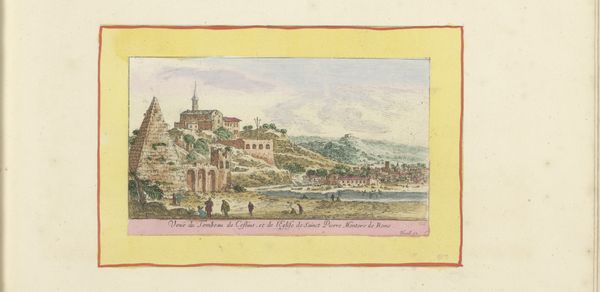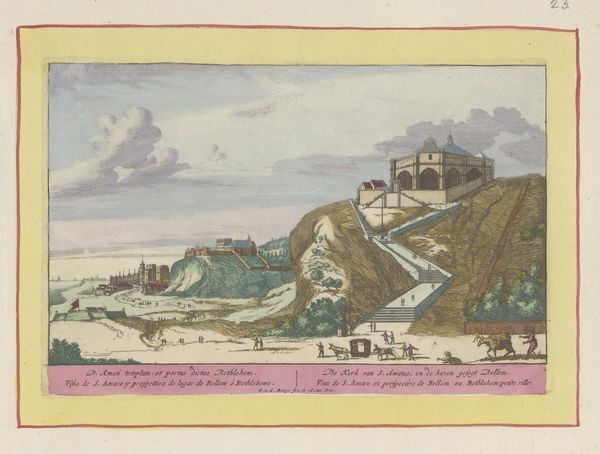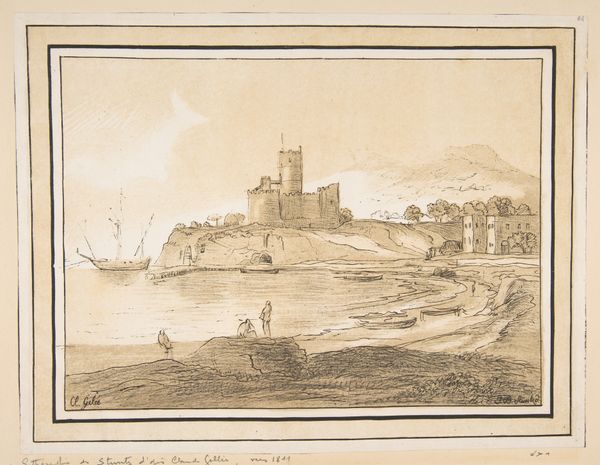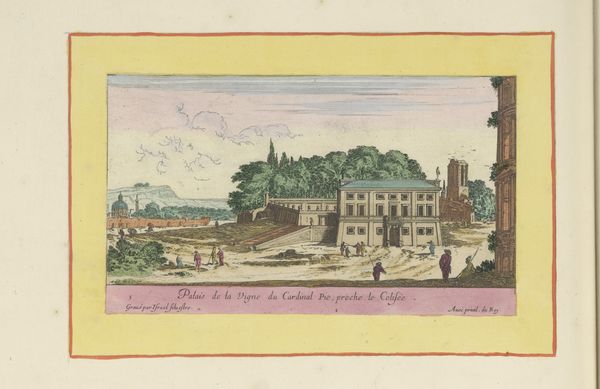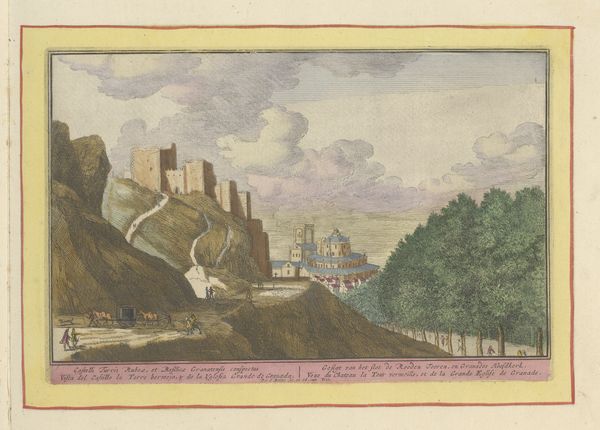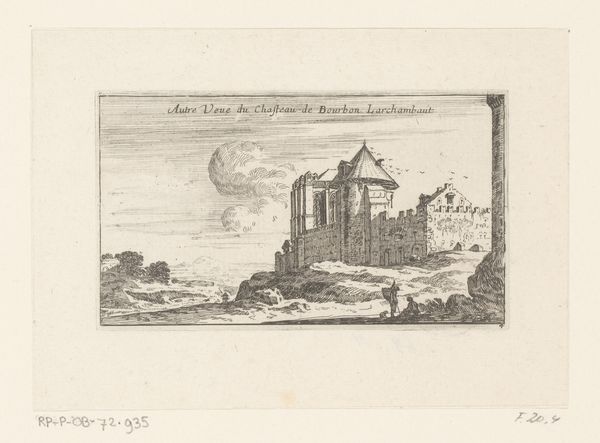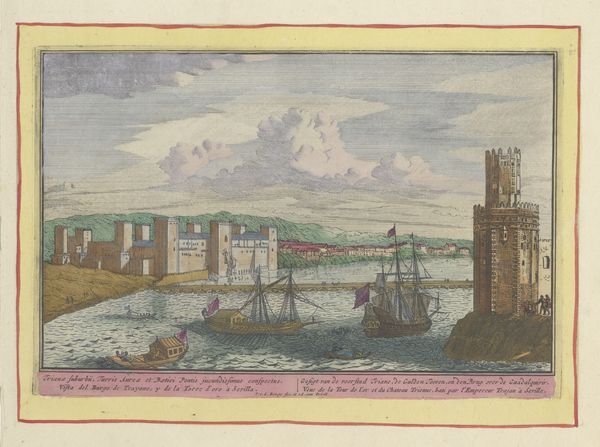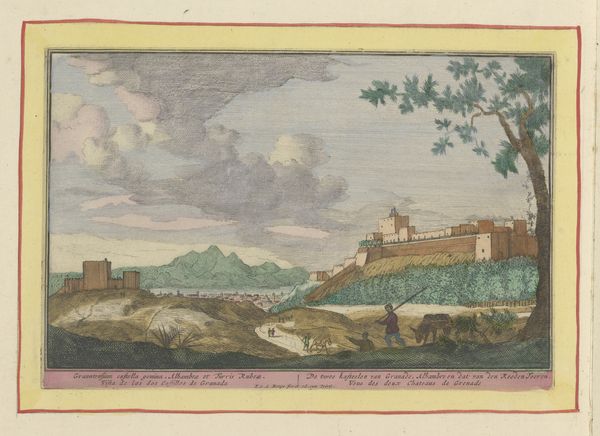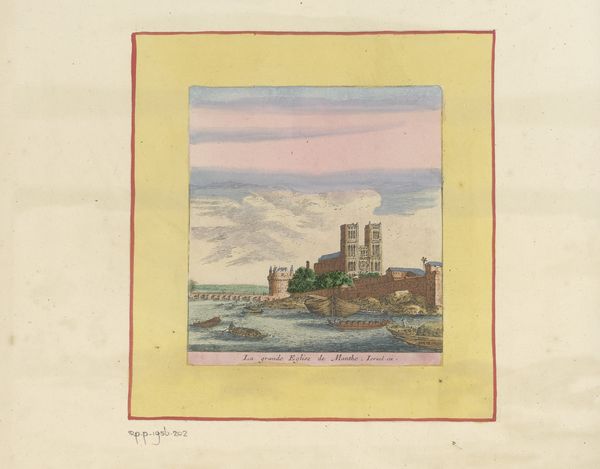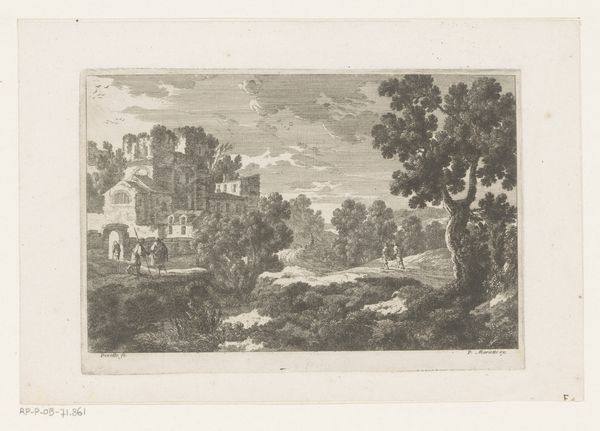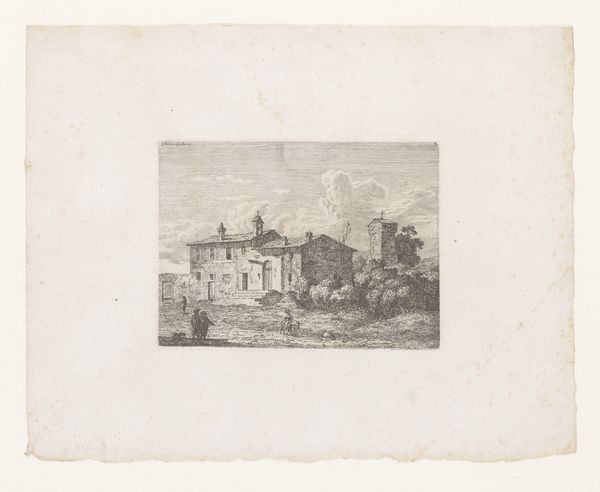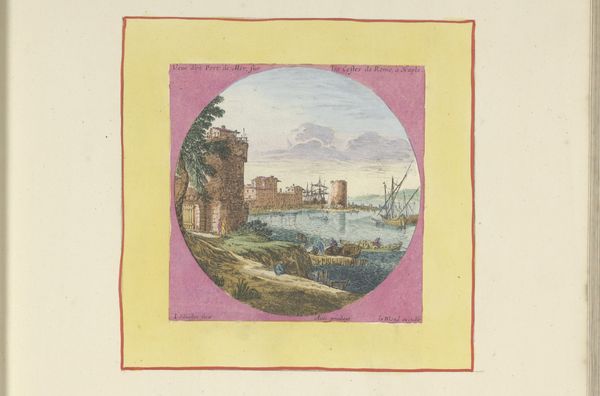
Ruïne te Rome, nabij de Boog van Constantijn Possibly 1620 - 1717
0:00
0:00
drawing, watercolor
#
drawing
#
baroque
#
landscape
#
watercolor
#
coloured pencil
#
cityscape
#
watercolor
Dimensions: height 117 mm, width 250 mm
Copyright: Rijks Museum: Open Domain
François Collignon made this print of a ruin in Rome, near the Arch of Constantine, sometime in the 17th century. This image speaks to the grand tradition of the architectural print, common in the artist's time, where classical ruins were celebrated for their aesthetic and historical value. Here, Collignon presents a picturesque view, where nature overtakes the man-made structure. This can be seen in the vegetation growing from the ruin’s tower, as well as the water surrounding the depicted mound. The print hints at the social context of 17th-century Rome, where wealthy Europeans, often from the north, came to view and study such antiquities. In its own way, Collignon's print contributes to the institutionalization of art history, presenting a romantic vision of ruins that would shape understandings of classical antiquity for centuries. To learn more, look to collections of prints and drawings in major museums and libraries. These institutions often have detailed records that provide crucial information about the history and cultural significance of such works.
Comments
No comments
Be the first to comment and join the conversation on the ultimate creative platform.
